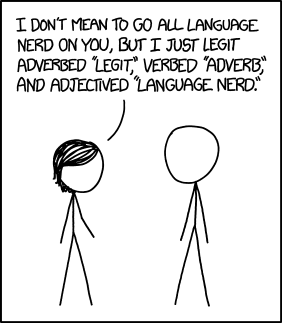Are you a linguistic prescriptivist who loves a catchy tune? Here is the world’s premiere parody song-writer, „Weird Al“ Yankovic with his hit all about his frustration at the bad grammar and language usage you see all over the internet. Oh, and you might recognise the tune…
Schlagwort-Archive: grammar
Why did people stop saying „thou“?
German has Sie and du, French has vous and tu, Spanish has usted and tú, and modern English has… you.
But this was not always the case. In the 15th century, you was used in a similar way to the German Sie. The equivalent of the German du was the English thou (and thee for dir), words that will be familiar to anyone who has read Shakespeare in the original English. So to say English has no Sie form is not totally correct – more historically accurate would be to say English has only a Sie form. See more below:
Why English Has Words With Silent Letters (includes Podcast Recommendation 13)
This article from the Grammar Girl blog looks at the phenomenon of silent letters – did you know that more than half of the letters in the English alphabet are silent in at least some words? Why they are so common in English? Click the picture below to see more. There is also a podcast to accompany the article (top right of page).
xkcd – Language Nerd
From the always excellent xkcd – „A webcomic of romance, sarcasm, math, and language“ – some language nerding to help you welcome the weekend. If you don’t understand it, ask your English teacher to explain it – they will thank you.

e.g. is NOT the same as i.e.
Today the LINGUA FRANCA Sprachschule blog is dealing with an issue that is as big a problem for native speakers as it is for English learners – the difference (and there definitely is one!) between e.g. and i.e.
e.g. is the short form of the Latin phrase „exemplī grātiā“, meaning „for the sake of example“. It is used when you list some examples of what you have just stated. In spoken language, you normally just say „for example“. The German equivalent is z.B.- zum Beispiel
i.e. is the short form for the Latin phrase „id est“, meaning „that is“. It is used when you want to clarify what you have stated by putting it in other words, i.e. rephrasing for the sake of clarity (see what I did there?). When you are speaking, you usually just say „that is“. The German equivalent is d.h. – das heißt
If you want some more details and examples, all in colourful comic form, have a look at:




